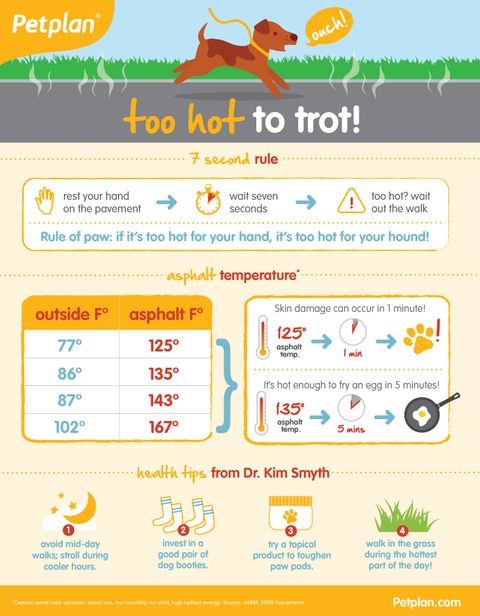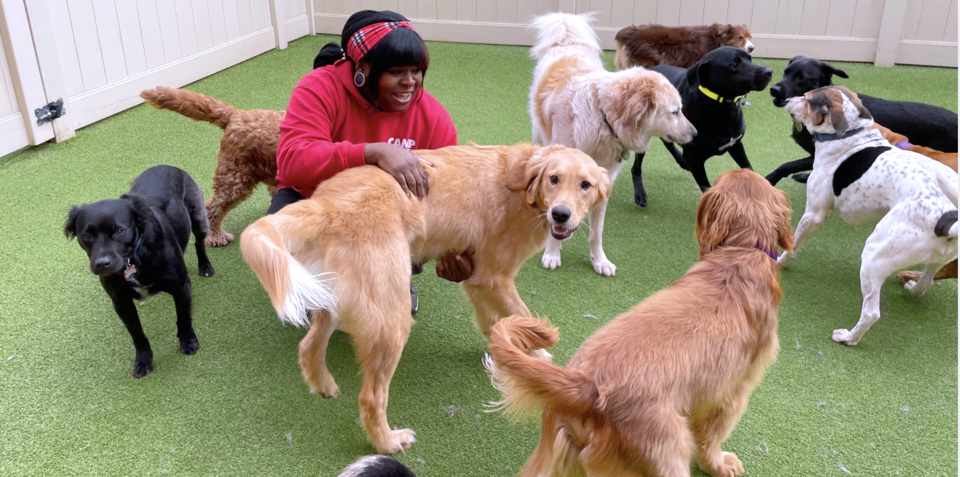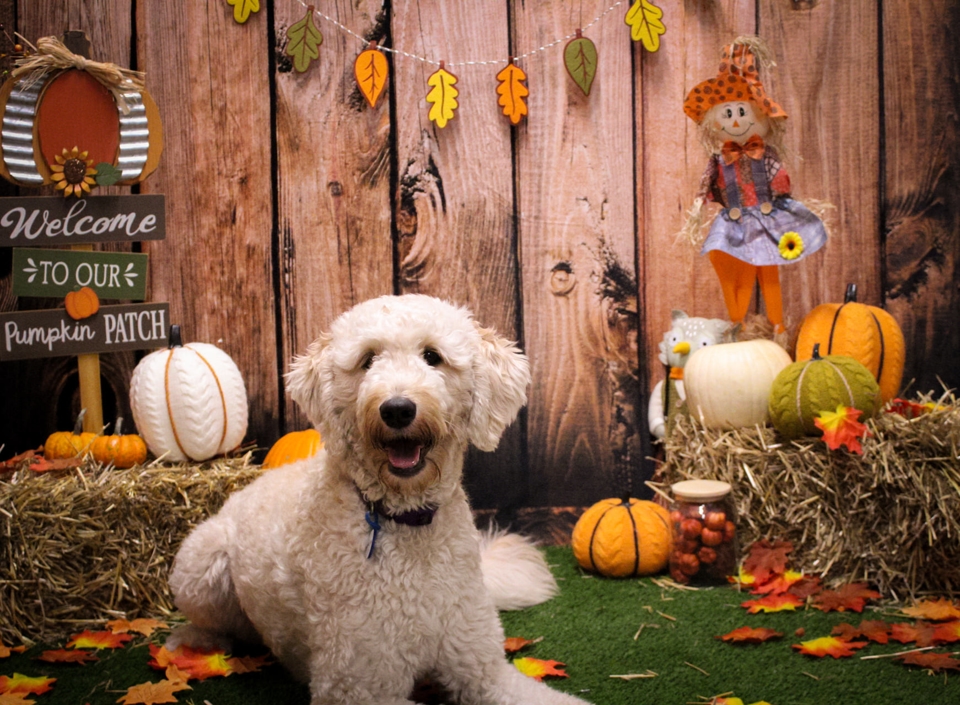Summertime is a time for fun – for you, and for your dog, too. But it’s necessary to practice some caution, because it can get hot quickly this time of year, especially for your friend in a fur coat. Here’s some summer safety tips to remember to keep your pup healthy:
Car Travel with Dog… Or Not
We love dogs, and know the joy of their company well. But we also know how sensitive dogs in cars are to the heat. If you have errands to run that aren’t at pet-friendly locations, it’s best to leave him at home where there’s A/C.
While a dog can also sweat marginally through the paws and nose, the main source of temperature regulation in our furry friends is through panting. Small spaces, like a car, retain heat shockingly well via greenhouse effect. In 80-degree weather, the interior temperature of a car can rise to nearly 100 degrees in just 10 minutes. After 30 minutes, it can reach 114 degrees, and after an hour, the temperature can reach 123 degrees – more than enough to prompt onset of heat stroke.
If this happens while a dog is in the car, panting may well not be enough to dissipate the heat effectively.
Dogs who are suffering from the heat in a car may exhibit symptoms such as rapid panting, panicked behavior (like attempting escape), excessive drooling, or appear weak or unsteady. Remember: if you’re not comfortable, they’re probably not comfortable, either.
If you ever think you see a distressed dog trapped in a hot car, you are within your right to call law enforcement and animal control to aid in rescue – some areas even have Good Samaritan laws mandating it. If you are unsure how to contact local law enforcement, dial 311 (local law enforcement line) or even 911 if you suspect the dog’s life is in imminent danger.

Sun Protection for Dogs
Dogs have fur to protect them from UV rays, but sunburn isn’t necessarily an impossibility. Dogs with lighter coats, thin coats, or where skin is exposed such as the belly, ears, or nose are still at risk.
Protect your dog safety from the sun with:
Dog sunscreen: sunscreen formulated specifically for dogs is important, as it leaves out unsafe ingredients!
UPF t-shirt or vest
Dog sunglasses or visor: Just introduce them slowly and encouragingly if your pup isn’t used to using them.
Portable dog shade such as an umbrella, sunshade, or collapsible canopy
Beyond sun protection: also great to help a dog stay cool!
When Things Heat Up: Dog Heat Tips
There are two things you should monitor when the summer months hit and you have a furry friend:
1. Keeping It Cool
The best tip for pet heat safety is to keep them inside a place where it’s cool, of course. But when you do need to take them with you, here are some things you could consider having on hand to make sure your dog is comfortable:
A collapsible bowl for dog hydration on the go, along with plenty of drinking water
Dog cooling mat or dog cooling vest for extended periods outside
Dog cooling bandanas are also an option
Frozen bone, chill fill, or KONG toy
Protective boots for hot pavement or ground for best dog paw care practices
If you’re looking for a fun summer activity: dog pools, when properly cleaned and maintained after each use, are a great way to engage your dog when it’s hot out!
See this handy infographic to tell when the pavement is too hot for your pup's paws.

Note: while the garden hose is a fun way to cool off, know that the water inside your hose, much like the air in a car, can become extremely hot, even in mild heat conditions. For example, at an outside temperature of 95°F, the water in a hose on the grass could reach 117°F, and on concrete, it could climb to nearly 123°F. In hotter conditions, such as during a heatwave, the water temperature can exceed 140°F. This is more than enough to scald your furry friend.
So when considering whether or not to use your hose for some fun cooling off, make sure it’ll do just that by running it for about a minute, and then testing it with your own hand carefully. If it feels hot with just your hand close to the spigot, you can know to avoid using it. Try coiling it up in a shaded area to keep the water from getting too hot next time.
Know the Signs of Dog Heatstroke
Heatstroke means a dog has lost the ability to regulate its body temperature and is actively overheating beyond the body’s capability to manage. This is not to be confused with dog heat stress; dog heatstroke is a medical emergency, while dog heat stress is the precursor. It is vital that dog owners recognize the signs of both heat exhaustion and heatstroke so they can act accordingly.
While all dogs have a risk of heatstroke, short-nosed, long-haired, and very young or very old dogs are at most risk of heatstroke.
Signs of dog heat stress include:
Excessive Panting: Rapid panting as the dog tries to cool down.
Increased Heart Rate: Heart rate acceleration.
Salivation: Excessive drooling or foamy saliva.
Lethargy: Lack of energy and enthusiasm.
Signs of dog heatstroke include:
Very High Body Temperature: Rectal temperature over 104°F (40°C) typically.
Collapse: The dog may collapse or be unable to stand.
Seizures: Convulsions due to the high body temperature.
Weakness or Disorientation: Difficulty maintaining balance, general weakness, or a confused mental state or signs of lack of understanding.
Loss of Consciousness: Potentially leading to coma.
Red or Pale Gums: Gums might be bright red initially, turning pale as the condition worsens.
Vomiting or Diarrhea: Often with blood in severe cases.
Fast, Irregular Heartbeat: Can develop into cardiac arrhythmias.
If you are concerned that a dog is suffering from the heat:
Get the dog to a cool, shaded area
Wet towels with cool water and drape over the dog (don’t use ice – it shocks the system and can exacerbate the issue!) or pour cool water over the dog
Refresh frequently
Allow small sips of cool water
Transport to the closest veterinary hospital
Prevention is key! Heatstroke is often deadly to a dog. While understanding the signs of heatstroke and how to respond, taking steps in practicing dog heat safety and preventing heat illness from occurring is best.
Exercise your dog early in the morning or later at night when it is coolest
Avoid physical activity outdoors during high heat
Enjoy indoor activities instead such as puzzles, hide & seek, or training sessions to keep them engaged
Make sure your dog has plenty of fresh water available all day
Provide shade when outdoors
Never leave your dog outside in the heat of the day
Do not leave your dog in a car alone
If you will be outside for an extended period of time (such as a sports game, picnic, or hike) on a hot day, leave your pup at home
Keep towels and water bottles in a dog first aid kit, if you have one
With this information, you can get ready to enjoy a fun and safe summer – and your dog will, too.


.png)



